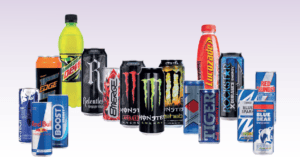Introduction
Feeding children aged 1–5 can sometimes feel like a balancing act. While parents strive to provide the best, children’s tastes and appetites can make mealtimes challenging. This guide offers general advice on creating balanced, nutrient-rich meals tailored to this age group.
Please note this is general guidance tailored to 1-5 year olds. If you’re reading this going ‘Orla, this is so unrealistic’ – I hear you! If your child is selective, or fussy, then this advice will need to be altered to meet where they are at.
Core Recommendations
What is a Balanced Diet?
- Children should ideally eat a variety of foods from all key food groups daily to ensure a full range of nutrients for healthy growth.
- Food groups include vegetables, fruits, wholegrains, dairy, protein (meat, fish, eggs, legumes), and healthy fats.
- Eat meal should be tailored to include
- carbs for energy,
- protein/ dairy for their muscles/ bones
- a small amount of healthy fat for thier brains, hormones and to absorb important nutrients.
- some colour (fruit and veg) to prevent illness and optimise health.
Portion Sizes by Food Group
Portions should be appropriate for young children and adjusted for their age, activity level, and appetite. Generally, they will guide you on how much they need to eat. Sometimes they eat more in the first half of the day, sometimes more in the second half. They differ. But remember, if you feel they eat past their needs, it’s important to work on speed of eating, and encourage eating with minial distraction.
Fruit and vegetables
When they’re 1-5 years old, most parents in a bid to give their kids a super healthy diet can run the risk of overdoing it. Some of the kids recipes I see are nearly entirely fruit or veg. Remember, with kids, their diet needs to be based on wholegrain carbs and have some colour, protein and fat. When it comes to fruit and veg the important thing is that you’re getting them used to having it as part of each meal. You want that to be the norm. Below are examples of portions.
Fruit and Veg targets per day
- An average serving size is about 40g. A serving size that fits into half the palm of your hand is about right for children age 1 to 4.
- Ages 1 to 2: 2 to 3 servings a day
- Ages 3 to 4: 4 to 5 servings a day
Vegetables (a handful):
- Portion Size: 1–2 tablespoons for a 1-year-old; 2–3 tablespoons for a 5-year-old.
- Examples:
- Steamed broccoli florets (2 small pieces).
- Cooked carrot sticks (3–4 sticks).
- Cucumber sticks (3-4)
- Cherry tomatoes (3-4 cut in quarters)
Fruits (a handful):
- Portion Size: ½ small fruit (e.g., banana or apple) or 2–3 tablespoons of chopped fruit.
- Examples:
- Half a peeled orange.
- 1 mandarin
- 1 kiwi
- 5-6 grapes cut in quarters
- A handful of berries cut in half (about 5–6 berries).
By age 5 their targets and portions change
- 5-7 portions a day
- Continue to use their hand as a measure. Generally, when fully grown that looks like 7 x 80g servings.
How much is a portion of vegetables, salad and fruit by age 5 and beyond
- 1 medium sized fruit – apple, orange, pear or banana
- 2 small fruits – plums, kiwis or mandarin oranges
- Small fruits – 6 strawberries, 10 grapes or 16 raspberries
- ½ cup cooked vegetables – fresh or frozen
- 1 bowl of salad – lettuce, tomato, cucumber (80g of it, basically)
- 1 bowl of homemade vegetable soup
Carbs!
Carbohydrates are what their diet should be based on. It’s the energy source that fuels movement, and provides the bulk of their fibre. Ideally, you’d be getting them used to having the brown versions (where you can!).
Offer at least 1 of these foods at every meal.
Some cereals have iron added. Usually they’re fortified with at least 12mg of iron per 100g. Add chopped fruit (provides vitamin C and fructose) to cereal that contains iron to help their body to absorb the iron.
Limit sugar-coated and chocolate-coated breakfast cereals. Consider it a sometimes food!
Wholegrains:
- Portion Size: Remember this is a guide and increase it as they get older.
- Ages 1 to 2: 3 to 4 servings a day
- Ages 3 to 4: 4 to 6 servings a day
- Examples:
- 2-3 tablespoons of cooked brown rice or wholegrain couscous (30g)
- ½ slice of wholegrain bread,
- 30g cereal,
- 1/2 pita,
- 2–3 tablespoons (1/2 cup or 30-40g) of cooked pasta, or quinoa,
- 1 small roll
- 1 rice cake
By age 5 their targets and portions change
- 3-5 portions a day
- Remember a 200ml disposable water glass (200ml) can be used as a cup measure.
How much is a portion of carbs by age 5 and beyond?
- 1 cup of cooked rice, pasta, noodles or cous cous
- 2 medium or 4 small potatoes
- 2 thin slices wholemeal bread
- 1 ½ slices wholemeal soda bread
- 1 pitta pocket
- ⅓ cup dry porridge oats
- ½ cup unsweetened muesli
- 1 cup flaked breakfast cereal
Protein!
It’s super easy to meet your kids protein requirements so no need to panic about this one. Instead, focus your energy on getting the specific nutrients from the protein sources. But first, what’s a portion….
Protein (Meat, Fish, Eggs, Legumes):
- Portion Size: About 30g of meat, poultry or fish. This is about 1/3 of the palm of your hand (you then eat a portion the size of the palm of your hand!).
- Examples:
- 1 quarter of a fillet of grilled salmon.
- 1-2 tablespoon of cooked lentils or minced meat.
- 1–2 tablespoons of cooked meat.
- 40g baked beans (or other beans or peas like chickpeas)
- 35g hummus
- 35g cooked tofu
- 1 small egg.
- Start with this portion size as a guide for 1 year olds and increase as they get older.
Getting the micronutrients in:
- Red meat (iron, zinc etc…): it’s a rich source of bioavailable iron. Aim for about 3 times a week.
- If you don’t feed your kids red meat, opt for chicken thighs rather than chicken breast. If vegetarian, eggs are a handy source, while beans and lentils offer some iron to those following a vegan diet.
- Avoid processed meats. The odd bit is fine, but if possible, steer away from the daily ham sandwich (even one you boil up at home yourself) and consider sausages a sometimes foods, not an every day food.
- Fish (omega 3, iodine, zinc etc…) Try to include fish at least once a week. Ideally, offering oily fish once a week, white fish once a week and shellfish once a week would be really great. However, if they’re still growing a taste for it, remember that if they eat fish fingers when they’re young, they’ll probably eat lots of different fish when an adult.
By age 5 their portion could look like the following
- Some protein or dairy with each meal
- One serving is 50–75g (half the size of the palm of your hand) cooked lean beef, lamb, pork or mince
Dairy (Milk, Cheese, Yoghurt):
Dairy is a great source of lots of nutrients, and is really top of its game when it comes to supporting healthy bones and teeth. Sometimes young kids can overdo the dairy though. What I mean by this is that they consume so much dairy that they don’t consume enough of something else. A daily intake of 550 mL of milk, or equivalent amounts of yogurt or cheese, should be provided (where 200 mL of milk is equivalent to 150 mL of yogurt or 30 g of cheese).
It’s my professional view that kids shouldn’t be given low fat diary.
Also, please remember that they shouldn’t be getting a bottle after the age of 1! It can delay oral motor and fine motor skills. It’s a tough one to give up as they love it and you might love giving them a bottle. But… needs must.
Once your baby turns 1, they don’t need formula or any special milk.
- Targets by age group:
- Ages 1 to 2: 3 servings a day
- Ages 3 to 4: 3 servings a day
- Ages 5 to 9: 3 servings a day
- Ages 9 to 19: 5 servings a day
- Examples:
- 200ml milk;
- 1 small pot of yoghurt (125g);
- matchbox-sized piece of cheese (20g).
Vitamin D Supplementation
- Children aged 1–5 years should take a daily supplement of 5 µg of vitamin D, especially from October to March when sunlight exposure is limited.
- This supports healthy bone development and immune function.
- Children age 5 to 12 need 10 micrograms while teenagers need 15 micrograms of vitamin D daily as a supplement during the winter months.
- Provide the supplement all year round if they are brown skinned or have reduce sun exposure.
Hydration
- Water is the main drink for children.
- Milk is also important but should be limited to 550ml per day to avoid reducing appetite for solid foods or inadequate intake of other important foods. If they don’t drink milk, that’s fine! Just focus on meeting their dairy requirements with yoghurt/ cheese instead.
- They don’t need ‘follow-on’ or toddler milks.
Healthy Meal Patterns
Children need three main meals and 2–3 snacks each day to meet their energy and nutrient needs.
Meal Examples with Portions for a 1 year old:
- Breakfast:
- ½ slice of wholegrain toast with scrambled egg (1 small egg) and some cherry tomatoes cut in quarters.
- Lunch:
- 2 tablespoons of cooked pasta, 1–2 tablespoons of cooked chicken, and 2 tablespoons of steamed peas.
- Dinner:
- 2 tablespoons of mashed potato, a small bit of fish, and 1–2 tablespoons of broccoli.
- Snacks:
- A small pot of yoghurt with some berries.
- A rice cake topped with 1 teaspoon of peanut butter and a few banana slices.
By 5 years of age they could be eating far more than this. Let their hunger guide you.
Limiting Certain Foods
- Sugary Foods: Avoid foods high in added sugar (e.g. sweets, biscuits, sugary drinks). These can lead to dental decay and excess calorie intake. Their calorie requirements aren’t massive but their vitamin and mineral requirements are big. So, the more they have of these, the more you run the risk of vitamin and mineral deficiencies OR excess calories OR both.
- Salty Foods: Minimise foods high in salt (e.g. crisps, processed snacks) to protect kidney health.
- Choking Hazards: Avoid whole nuts, popcorn, marshmellows, and hard candies for younger children.
- Avoid cola: It contains caffeine!
Practical Tips for Caregivers
- Encourage Variety: Offer new foods repeatedly as children may need several tries before accepting unfamiliar tastes. I’ll do another article on fussy eating. I’ve been there… It’s tough going!
- Involve Children: Let them help prepare meals to foster an interest in healthy eating.
- Model Healthy Eating: Set an example by eating a balanced diet and maintaining a positive attitude toward food.
- Establish a Routine: Stick to consistent meal and snack times to avoid grazing throughout the day.
Conclusion
These dietary guidelines aim to provide practical, portion-based advice for feeding children aged 1 to 5 years. They emphasise a varied, nutrient-dense diet with age-appropriate portions and limited processed foods. By following these recommendations, caregivers can help establish healthy eating habits and support children’s growth and development.
FAQs About Feeding Your Child (Ages 1–5)
- What should a 1-year-old eat in a day?
A 1-year-old should eat a mix of food groups, including wholegrains, fruits, vegetables, proteins, and dairy. Offer 3 meals and 2–3 snacks daily, focusing on small, manageable portions suited to their appetite. - How do I deal with a picky eater?
Introduce new foods gradually and repeatedly, as it can take several tries for children to accept unfamiliar foods. Make meals fun (or wiihtout stress!) and involve your child in meal preparation to encourage interest in eating. - What’s the best drink for toddlers?
Water is the best drink for toddlers, followed by whole milk in limited amounts (up to 550ml daily). Avoid sugary drinks and follow-on formulas. - How much protein does my child need daily?
A toddler needs small portions of protein, such as 1–2 tablespoons of cooked meat, fish, or legumes per meal. By age 5, they can eat half the size of their palm (~50–75g). - How can I ensure my child gets enough vitamins and minerals?
Provide a varied diet with foods from all key food groups. Supplement with 5 µg of vitamin D daily, especially from October to March or year-round for children with darker skin. - How do I know if my child is eating too much or too little?
Trust your child’s hunger cues. Some days they may eat more, while on others they may eat less. If overeating is a concern, focus on mindful eating by slowing down mealtimes and reducing distractions. - Why is wholegrain better than white carbs?
Wholegrains provide more fibre, vitamins, and minerals than refined carbs, offering sustained energy and improved digestion. Getting them used to brown versions can take time. - Should I limit dairy intake for my child?
Yes, limit dairy to 550ml of milk or equivalent daily to ensure they have room for other nutrient-dense foods. - Are fish fingers healthy for toddlers?
Yes, fish fingers can be a good source of protein and omega-3s for toddlers, especially if they’re not used to eating fish. Serve them alongside vegetables for a balanced meal. - What foods should I avoid giving to young children?
Avoid foods high in added sugar and salt, whole nuts (choking hazard), hard candies (e.g. lolipops), marshmallows, and caffeinated drinks like cola.











